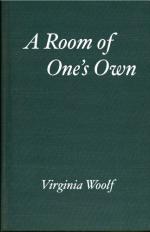
|
| Name: _________________________ | Period: ___________________ |
This test consists of 15 multiple choice questions and 5 short answer questions.
Multiple Choice Questions
1. Why did Behn start writing for money?
(a) She was discovered by an agency.
(b) Her husband lost his job.
(c) She started a newspaper.
(d) Her husband died.
2. One objection that Woolf addresses to her narrative is that she is being too _________ in her arguments.
(a) Materialistic.
(b) Aggresive.
(c) Unrealistic.
(d) Sensitive.
3. What name does the narrator give to the male author she reads after reading so many novels by women?
(a) Mr. X.
(b) Mr. A.
(c) Professor D.
(d) Marc B.
4. In the case of Charlotte Bronte, what does the narrator claim Bronte's gender interfered with?
(a) The novel's integrity.
(b) The reader.
(c) Her happiness.
(d) The tone of the novel.
5. What does the narrator say is the problem with the relationships between women in fiction?
(a) They are too simple.
(b) They are not realistic.
(c) They do not exist.
(d) They are too complex.
6. In what month was Mary Carmichael's book published?
(a) November.
(b) October.
(c) July.
(d) May.
7. As a metaphor for androgyny in writing, what does the narrator say poetry needs?
(a) A sex change.
(b) A sister.
(c) A father and a mother.
(d) A makeover.
8. What three things are brought together by the "stream" of life on the street?
(a) A man, a woman, and a child.
(b) A man, a woman, and a taxicab.
(c) A child, a balloon, and a clown.
(d) A man, a woman, and a bus.
9. What phrase in Carmichael's novel startles the narrator and starts her reflection on women as characters?
(a) "Chloe loved Roger."
(b) "I like men."
(c) "Chloe liked Olivia."
(d) "The women were angry."
10. Whose point of view takes over for the narrator at the end of Chapter 6?
(a) Professor X.
(b) Woolf herself.
(c) An Oxbridge student.
(d) Jane Austen.
11. What is Carmichael's novel called?
(a) Women and Fiction.
(b) A Tale of Two Cities.
(c) Life's Adventure.
(d) My Story.
12. The narrator says that Dorothy Osborne had a talent for what?
(a) Inventing a word.
(b) Painting.
(c) Framing a sentence.
(d) Singing.
13. In what century does the narrator believe women finally became complex characters in fiction?
(a) 16th.
(b) 18th.
(c) 20th.
(d) 19th.
14. What things does Carmichael not possess enough of, according to the narrator?
(a) Idleness.
(b) All of the above.
(c) Money.
(d) Time.
15. Whose letters seem to forebode an age of virility?
(a) Sir Walter Raleigh's.
(b) Bronte's.
(c) Her mother's.
(d) Dorothy's.
Short Answer Questions
1. According to the narrator, what will Carmichael "have her work cut out for her" as?
2. What, according to the narrator, is it fatal for anyone who writes to do?
3. The narrator contends that education ought to bring out the ________ between the sexes.
4. What, according to the narrator, has given women wider range in fiction?
5. Which gender does the narrator say is to blame for the current state of fiction?
|
This section contains 460 words (approx. 2 pages at 300 words per page) |

|




